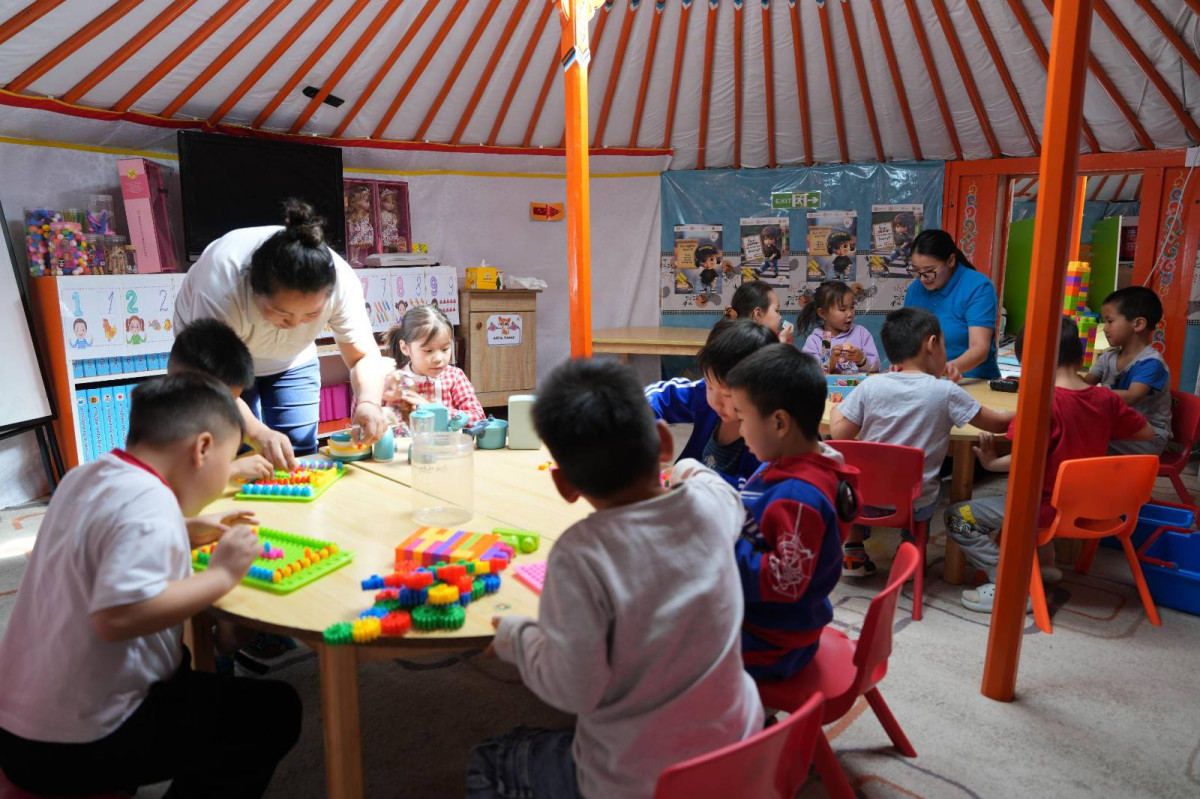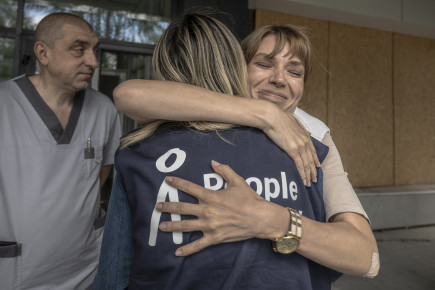Warm Classrooms, Bright Futures: How Climate-Resilient Ger Kindergartens Are Supporting Mongolia’s Youngest Learners
Published: May 6, 2025 Reading time: 4 minutes Share: Share an articleIn addition to being one of the most polluted capital cities in the world, Ulaanbaatar also faces another big problem: the lack of access to early childhood education. To address both of these issues at once, we’ve helped to establish so-called “ger kindergartens” which take place in gers (traditional Mongolian yurts) and helps to solve the problem of overcrowding in public kindergartens and also, thanks to the ventilation systems we’ve helped install, creates an environment where children can breathe clean air. Read on to learn more about the remarkable impact ger kindergartens are having in Mongolian society.

Ulaanbaatar, the coldest capital city in the world, is also among the most polluted. According to UNICEF’s report on climate change, the average daily PM2.5 level reaches 687 µg/m³, nearly 27 times higher than the World Health Organization’s safe threshold. These air pollution levels are largely attributed to the city’s long heating season and the reliance of nearly half its population on coal or wood-burning stoves in unconnected ger areas.
It is estimated that 15,000 children in Ulaanbaatar are without access to early childhood education. Additionally, current kindergarten facilities are operating over capacity by 27,198 children, highlighting a stark lack of accessible and suitable services. Combined with unfavourable air quality in the classrooms, the conditions for early childhood education are very tough.
Together with the support of ChildFund Korea and in partnership with UNICEF, we’ve decided to change this situation. Our initiative aims to provide affordable, energy-efficient, and accessible preschool education in Ulaanbaatar’s remote ger districts, where traditional infrastructure is often lacking.
The Children Couldn’t Focus
Before the installation of an advanced heating and ventilation system, the classroom environment was far from ideal. Children often sweated while playing and were exposed to sudden temperature changes that led to frequent colds. Now, thanks to improved air circulation, the classroom atmosphere is more comfortable and healthier—supporting children’s concentration, wellbeing and learning.
Meeting Demand Through Adaptable Solutions
Bad breathing conditions were not the only problem. The city and parents had to deal with a lack of educational facilities for children and overcrowding of existing kindergartens. However, now there is a solution for making more spaces for children in kindergartens in Ulaanbaatar.
According to the Model Regulation for Kindergartens under the Order of the Minister of Education and Science, both regular and mixed-age groups in kindergartens should consist of 20–25 children per group. The same applies to ger kindergartens, depending on available space. However, in practice, many groups now hold 30–40 children, significantly limiting the children’s learning environment and development opportunities.
In the “Climate-Resilient Ger Kindergarten” project we offer a tangible response to this problem, by setting up additional ger kindergartens in underserved areas and improving the quality of learning environments.
Climate-Conscious Design for Child-Centred Learning
Each ger kindergarten is equipped with the CHIP package—comprising of insulation, air-source heat pumps, and ventilation systems. These technologies not only create smoke-free, energy-efficient learning environments but also contribute to reducing greenhouse gas emissions. If energy assessments confirm cost savings, the use of heat pumps is expected to be scaled up as a sustainable heating solution.
Indoor air quality—crucial for children’s cognitive and neurological development—is being monitored through newly installed air sensors, both indoors and outdoors. Professional paediatricians are using the MoRBAS screening tool, adapted to Mongolian children, alongside the internationally recognised Strengths and Difficulties Questionnaire (SDQ) to identify developmental delays and mental health challenges. A smart plug installed in the heat pump system monitors electricity consumption, enabling continuous assessment of energy efficiency and economic feasibility.
A Scalable Model for a Healthier Future
By focusing on both infrastructure and developmental needs, the Climate-Resilient Ger Kindergarten project goes beyond improving access to education. It demonstrates a scalable, economically viable model that can be replicated in other high-need areas of the capital. Most importantly, the project ensures that children are learning in an environment that is warm, safe, and designed for their growth. As E. Uranbileg’s experience shows, even small changes in air quality and room temperature can have a profound impact on a child’s ability to concentrate and enjoy learning.
This transformation is part of the “Climate-Resilient Ger Kindergarten” project, launched in October 2024. We are confident that these investments will make a lasting difference. We believe that today’s efforts are directly contributing to a better tomorrow for Mongolia’s children.


